Photos: Deep-Sea Creatures Hide Out on Wood Falls
The makings of home
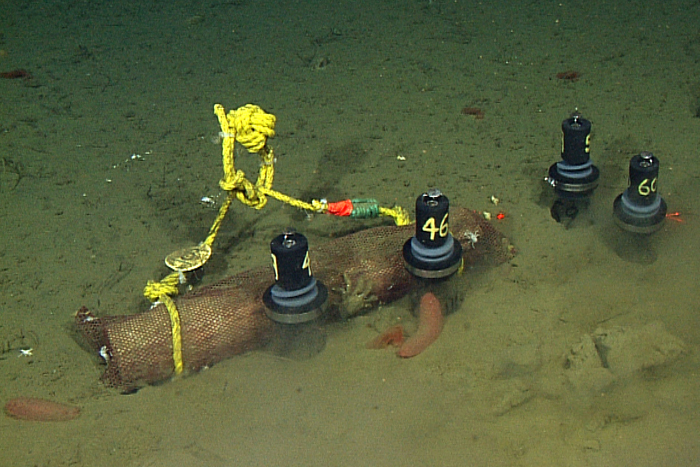
Sunken dead trees and wooden debris are rare food sources in the otherwise empty abyss of the deep seafloor. Now, a new study shows how this debris becomes home to thousands of squirming sea creatures.
Shown here, a bundle of acacia wood that sat on the seafloor for five years.
Home, five years in the making
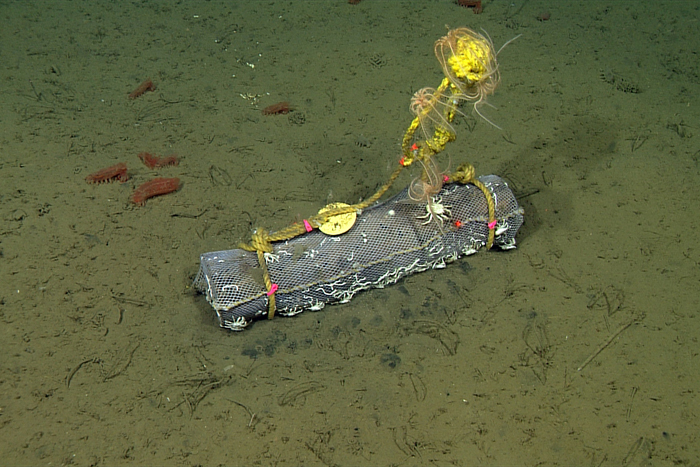
This photograph shows one of 36 bundles of acacia wood that sat on the deep seafloor, 3,200 meters below the surface, for five years. The bundle is held together by a mesh bag that allows the tiny larvae of deep-sea clams and other animals to colonize the wood. Galatheid crabs crawl around the outside of the mesh.
A closer look
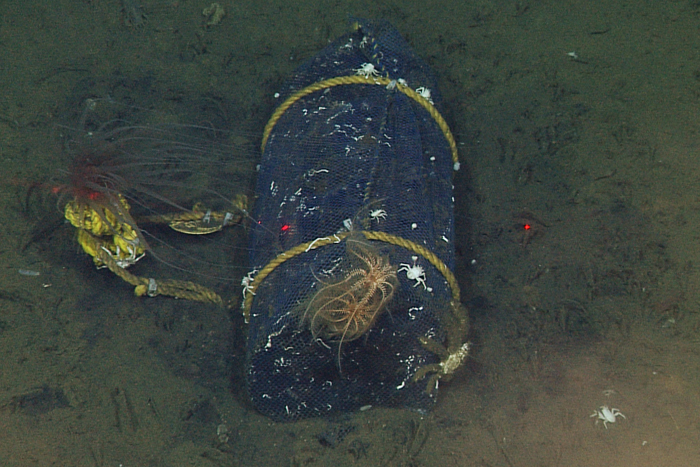
This photograph shows one of 36 bundles of acacia wood that sat on the deep seafloor, 3,200 meters below the surface, for five years. The bundle is held together by a mesh bag that allows the tiny larvae of deep-sea clams and other animals to colonize the wood. Galatheid crabs crawl around the outside of the mesh.Note the darkened sediment around this relatively large log, a sign of fungi and/or bacteria in the surrounding sediment.
Prepping the sample
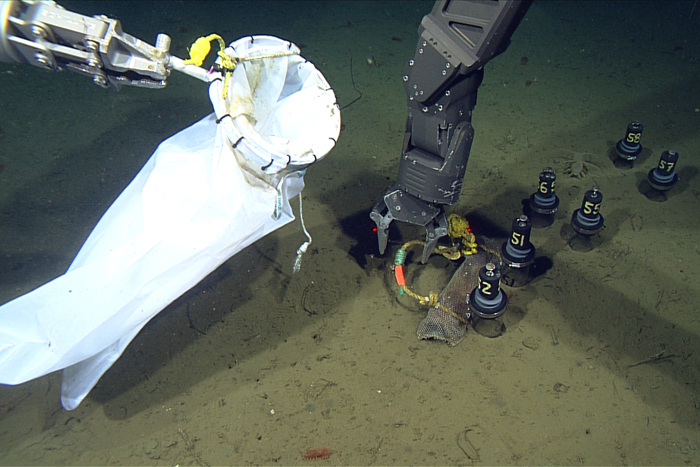
This photograph shows the two manipulator arms on MBARI's remotely operated vehicle Doc Ricketts preparing to collect one of 36 bundles of acacia wood that was placed on the deep seafloor, 3,200 meters below the surface. The arm on the right has picked up the wood bundle by its yellow rope handle. This bundle will be placed inside the white collecting bag being held by the left-hand manipulator arm.
Taking the sample
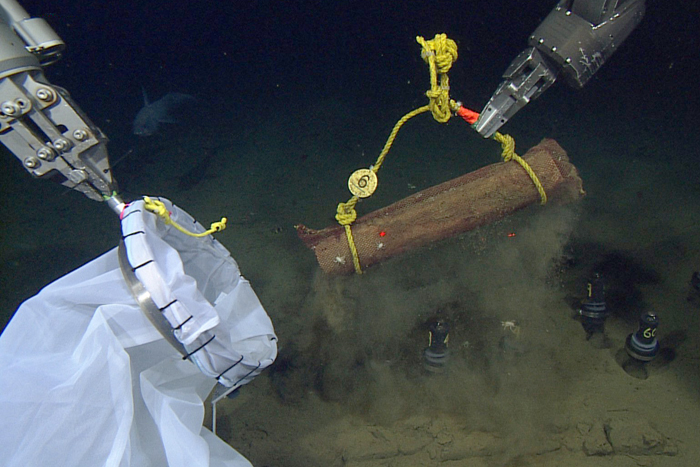
This photograph shows the two manipulator arms on MBARI's remotely operated vehicle Doc Ricketts preparing to collect one of 36 bundles of acacia wood that was placed on the deep seafloor, 3,200 meters below the surface. The arm on the right is preparing to pick up the wood bundle by its yellow rope handle. This bundle will be placed inside the white collecting bag being held by the left-hand manipulator arm. In the background are four "push cores" used to collect samples of seafloor sediment from around the bundle.
Investigating the wild life
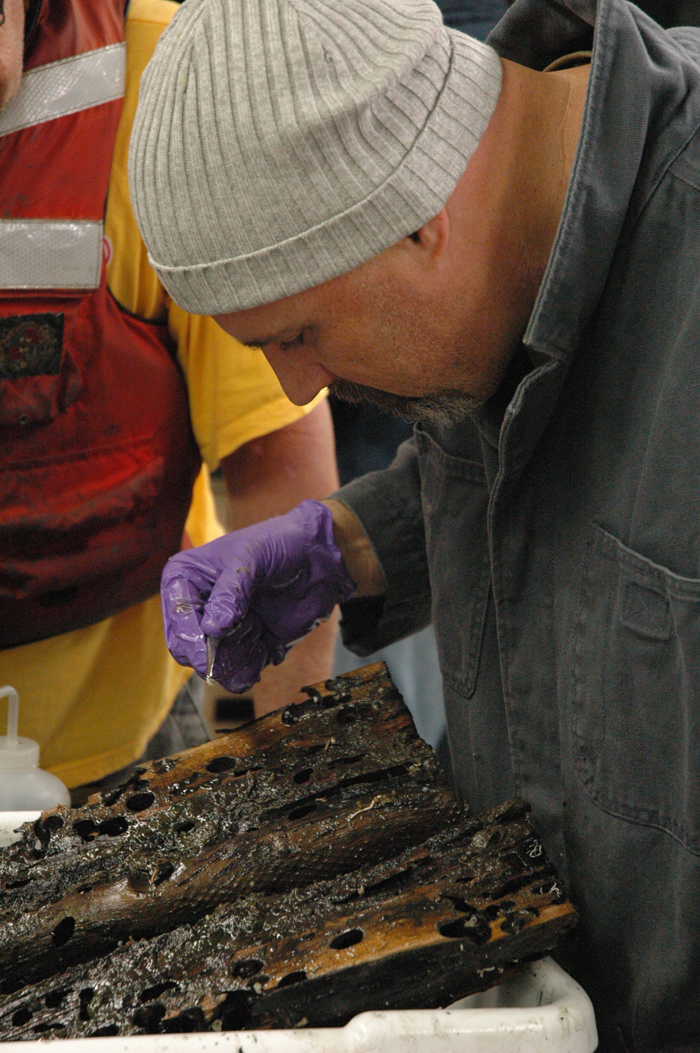
This photograph shows researcher Craig McClain, lead author of this study, collecting small animals from a piece of wood that was left on the seafloor for several years. Such painstaking work revealed a surprising variety of animals living in the wood, some of which were new to science. Note the large holes created by boring clams, which set the stage for later colonizers.
A sample of the residents
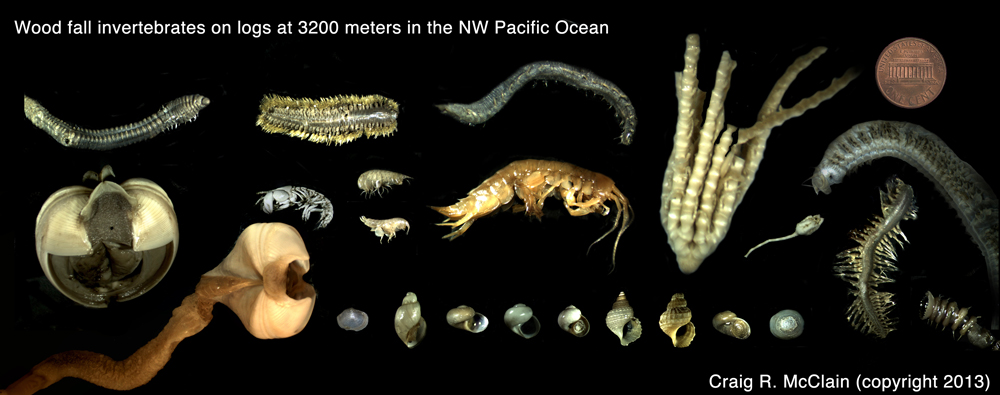
This photomontage shows some of the small animals that colonized bundles of acacia wood that sat on the deep seafloor, 3,200 meters below the surface, for five years (note penny for scale). The animals include boring clams (lower left), polychaete worms (upper left and lower right), snails and limpets (bottom), shrimp-like tanaids and amphipods (center), and a crinoid sea lily (middle right).
Sign up for the Live Science daily newsletter now
Get the world’s most fascinating discoveries delivered straight to your inbox.
An odd resident
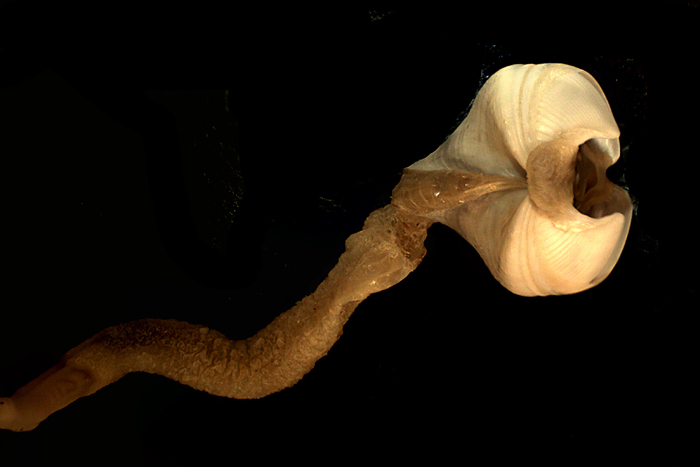
This boring clam colonized a bundle of acacia wood that was left on the deep seafloor, 3,200 meters below the surface, for five years. The large, jaw-like shells allow the clam to bore through the wood. It also eats fragments of wood, with the help of specialized bacteria in its gut.
A unique member
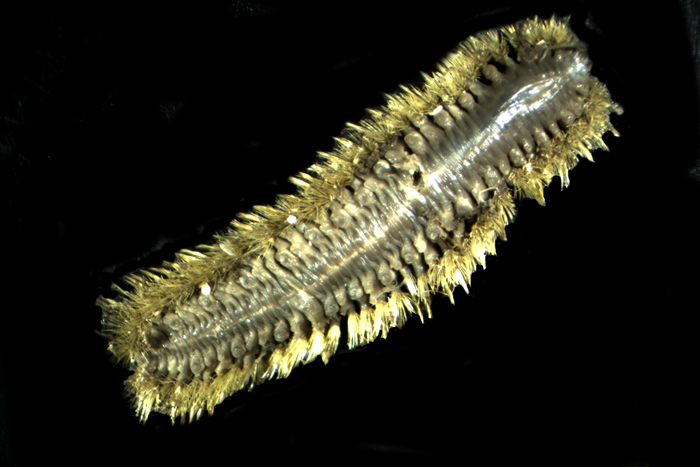
This beautiful polychaete worm colonized a bundle of acacia wood that was left on the deep seafloor, 3,200 meters below the surface, for five years.
A tiny creature
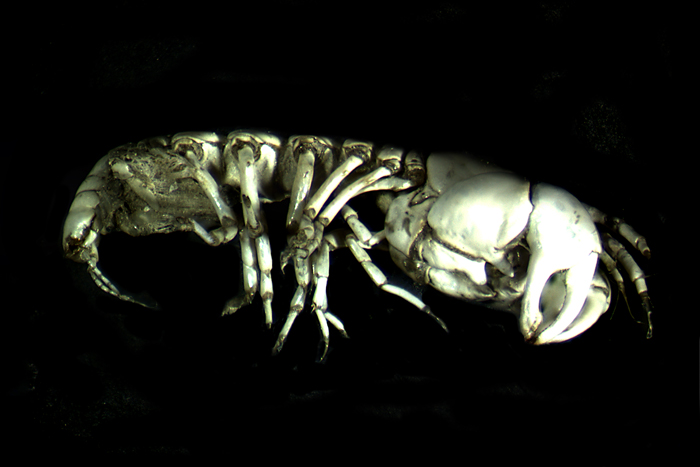
This small, shrimp-like tanaid colonized a bundle of acacia wood that was left on the deep seafloor, 3,200 meters below the surface, for five years.










